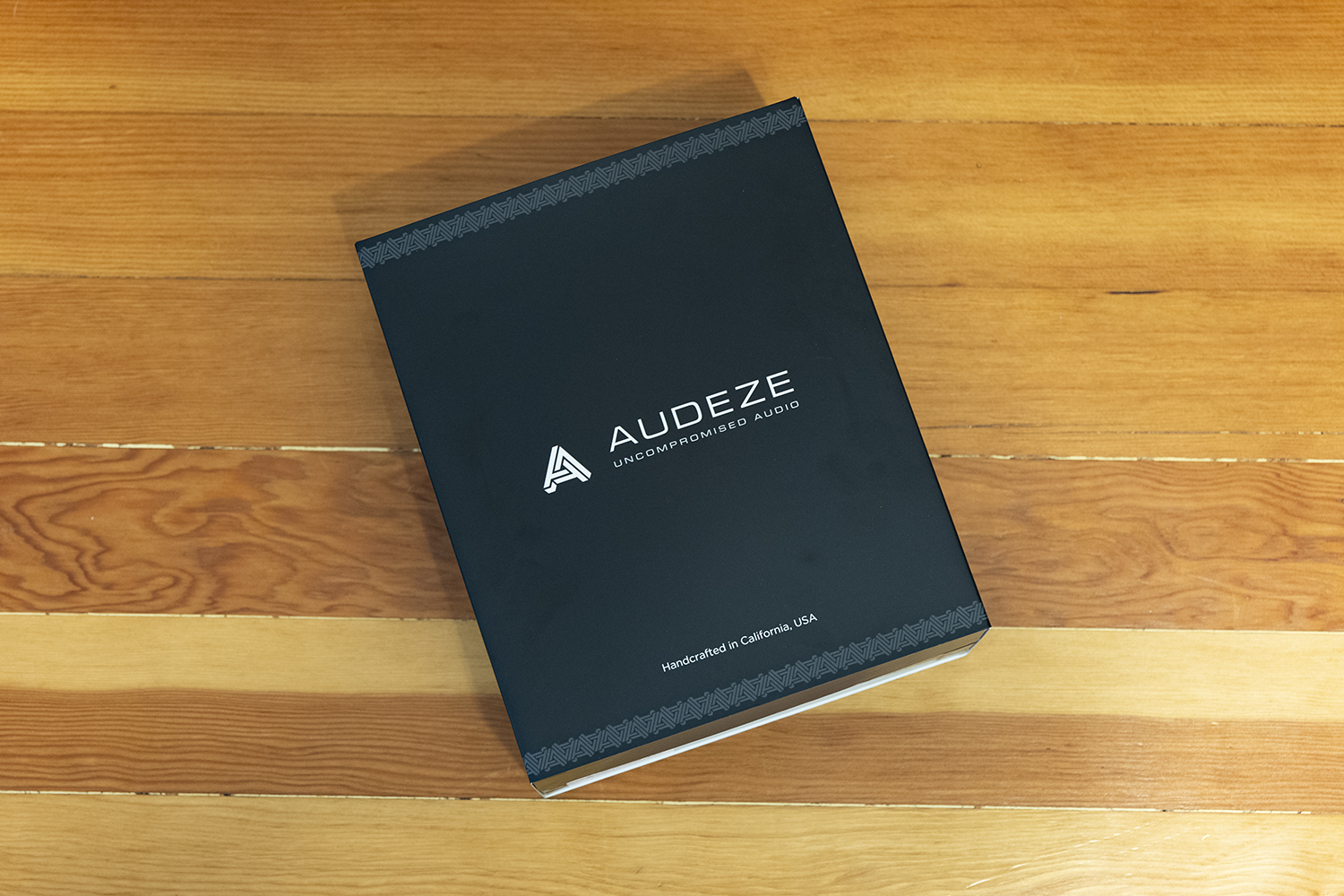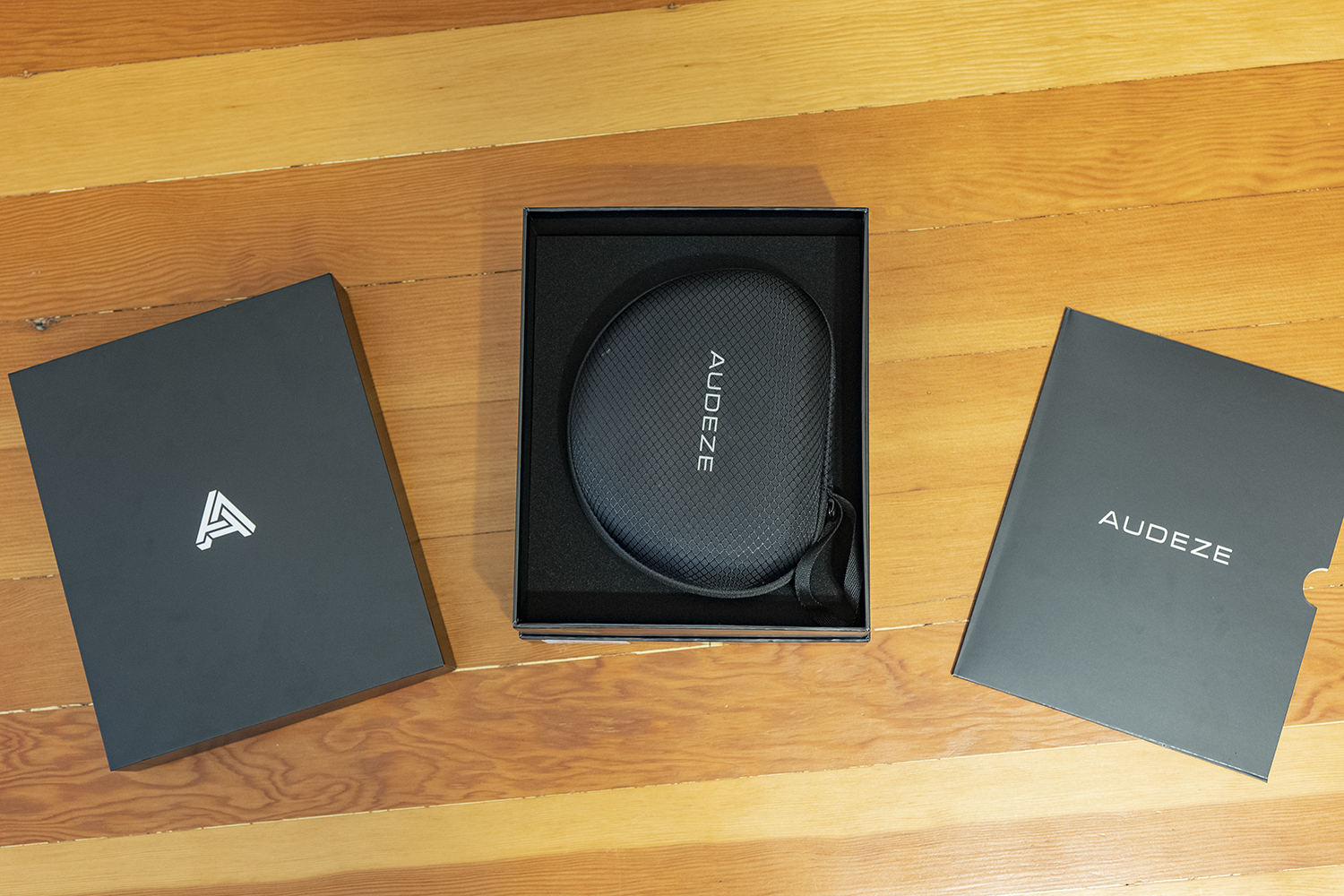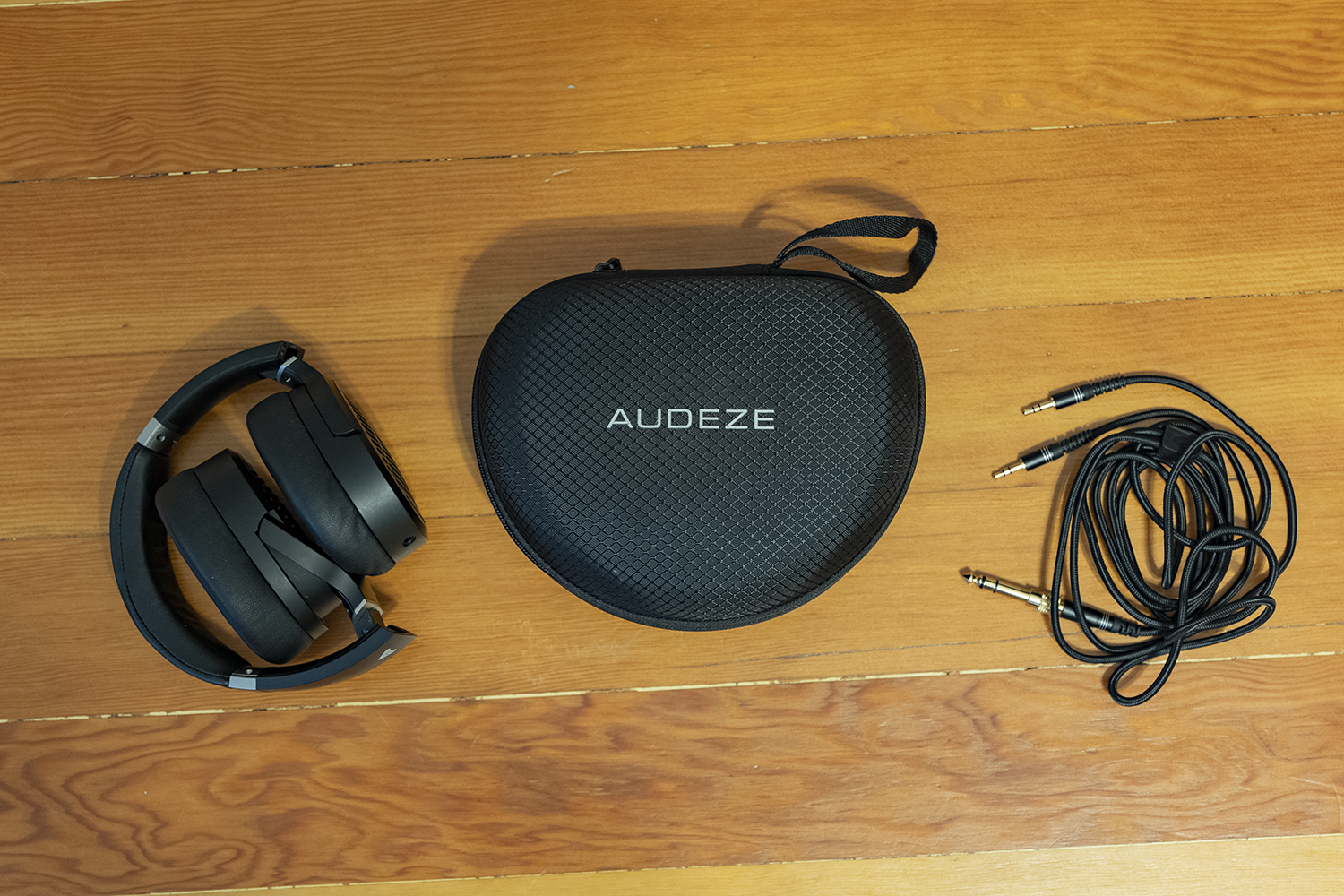“The Audeze LCD-1 have a beautifully wide soundstage and excellent clarity packed into a comfortable design.”
- Excellent audio clarity and detail
- Wide soundstage
- Very comfortable
- Expensive
- Questionable build
There is a special place in my heart for open-back studio headphones. I come from the production space, so when editing, I am always looking for the purest reproduction of sound to make sure my finished product is buttoned up.
So headphones like the $400 Audeze LCD-1 reference monitors really hit the right emotional notes for me. I know that open-backs have some downsides, but I can’t help but gravitate toward them: I adore the sound signature they generally provide.
So let’s answer this all-important question: When compared to others in the market, how do the Audeze LCD-1 stack up?
What’s in the box
Audeze has graced the LCD-1 with simple packaging. It’s not full of pomp and circumstance like Apple products are. Though the box is pretty nice and comes wrapped in a simple Audeze-branded sleeve, the headphones themselves are shipped folded inside the included hard-sided carry case.
From a safety and security standpoint, this makes a lot of sense. If I’m going to use that case to secure the headphones while traveling, it should follow that it’s high enough quality to protect them sufficiently when being shipped to me.
Because of this, I would expect them to only need a minimal molded cardboard insert to keep them from rolling around, but Audeze instead uses foam. Though you can likely recycle the rest of the packaging, that foam will have to be removed and trashed first. It’s not the most sustainable solution.
Aside from the carry case, the headphones ship with a nylon-wrapped, 2-meter 3.5mm to dual 3.5mm cable, and a 6.35mm to 3.5mm converter. The only note on the cable is that it is very long, which might inconvenience some people.
Design
The Audeze LCD-1 look nice despite their plastic construction. I’m more of a fan of how V-Moda constructed the M-200 monitors with a lot of metal parts, but if you’re going to go with plastic, Audeze chose one that at least feels nice.
Open-back headphones are more fragile than other headphones because, well, they have a lot of open and exposed parts. It should come as no surprise then that the LCD-1 feel like they’re at the more fragile end of the spectrum. They don’t feel like they’re going to fall apart in my hands, but I am going to be very gentle with them. I would not want to drop them.

On your head, the LCD-1 feel good. They’re snug without applying too much pressure, and light, but not to the degree they feel cheap. The headband is especially nice, as it rests on the crown of my head very gently, so much so that I don’t feel it when I wear it.
Audeze said it designed the memory foam cups to be extremely comfortable so that they could last for long listening sessions, and they do succeed in that to a degree. After a few hours, I could feel them pinch a bit near my temple, to the point I needed to take a short break.
But the emphasis is on short, because that fatigue passed quickly, and I was soon able to pop them back on and listen for several more hours. They are not the most comfortable headphones I’ve ever worn — that goes to the Montblanc MB01s — but they’re still great.
The Audeze LCD-1 look pretty nice despite the mostly plastic construction.
I found that I could extend my listening time by slightly twisting the cups to move the pressure around if I didn’t want to take them off entirely, which was nice. Each cup can twist a bit inward toward the back of your head, and fully sideways if you twist them outwards. That means that if you take them off and want to rest them on your collarbone, the hard plastic backs of the headphones rest there instead of the cups. I would prefer it the other way around, but I am also really only wearing these in my studio, so I only wear them around my neck for a very limited time when my wife wants to tell me something.
Features
Open-backed, wired studio monitors do one thing, and one thing only: They play music. Good ones do that exceptionally well.
The Audeze LCD-1 fit this description perfectly, but there are a couple of small benefits worth noting.
The headphones are smart enough to detect which end of the dual 3.5mm cable is plugged into which headphone, left or right.
The removable 3.5mm to dual 3.5mm cable can be detached when you want to stow them, and the headphones are smart enough to automatically detect which end of the dual 3.5mm cable is plugged into which headphone, left or right. When you can’t get something like this wrong, it’s an added bonus. It’s even nicer when you only have one cable to worry about, like with the V-Moda M-200s, but it’s nice that the cable can even be removed, unlike with the Grado Hemp Headphones.

The headphones can be folded up for travel, which is nice if you don’t want to keep these where you listen to music. For recording artists or sound engineers, that might mean at a different studio depending on the week. They pack down pretty small and fit nicely in the included carrying case. There is even a little sleeve inside the top lid of the case to keep the cable.
The LCD-1 are compatible with balanced audio, but it’s not straightforward. Audeze does not manufacture the necessary cable and no cable is commercially available, but Audeze does provide the pin-out specification to have them custom made by a third party. That’s a lot of hassle.
Sound quality
Let’s get one thing straight right out of the gate. Studio monitors are tuned for balanced EQ, meaning you should not expect crystalline highs nor teeth-rattling lows. The idea here is that what you hear is flat, neutral, and what was produced right out of the studio. Studio monitors are for audio engineers and video editors who want to hear exactly what something sounds like with no added sound profiles.
The thing is, part of what we as listeners like about headphones such as the Sony WH-1000XM4s are that they have a good sound profile mix, usually with more juice added to the bass and an overall warmer, more approachable tone. For most casual listeners, you probably don’t want studio monitors like the Audeze LCD-1.
But if you like the general sound of neutral audio, then you’ll love these cans.

I won’t go so far as to say I think the LCD-1 are perfectly neutral — I think they have a bit more in the lows than monitors typically do — but they are close, and excellent for picking out critical detail.
The main benefit of the open-back design is that these headphones have an incredible soundstage reproduction — music sounds like it’s coming from a large, perfectly engineered studio space.
When tracks are vocal-focused, like in Photographs by Professor Green, Rag’n’Bone Man, it sounds like you are piped right into the soundboard in the recording studio. In Brenden James’ The Sun Will Rise, it’s like I’m right there in the room; I can pick out every detail in his voice and the piano is rendered wonderfully, backing him up.
That extra bit of emphasis in the lows means I am presented with a slightly warmer rendition of Mumford and Sons’ If I Say, which I have to admit I really loved. The vocals in Dido’s Hurricanes also benefits from those lovely lows.
These headphones have an incredible soundstage reproduction — music sounds like it’s coming from a large, perfectly engineered studio space.
The sound the LCD-1 produce is more approachable to the average ear than other studio monitors without sacrificing the detail that audiophiles are looking for. They do all this while being more reserved in the highs than the Grado Hemp Headphones (no near-aching treble), but more robust in the lows than the M-200s (more rigidly neutral).
Though the design does mean that the soundstage is opened up when compared to closed-back designs, these do not isolate sound well at all for either you or anyone around you. These in particular blast music out the sides at a considerable volume, so if you plan to use these in any shared space, just know everyone around you can hear what you hear as clear as you can. My wife works in the next room and she can clearly hear the words to the songs I listen to from that far away.

On that same note, these headphones will worsen in perceived quality in louder environments, since they can’t keep noise out.
That’s the price you pay for the stellar soundstage of open-backs. I, for one, am willing to make that sacrifice.
Our take
The Audeze LCD-1 are very good studio monitors, but they’re expensive when you look at the construction — they are made of mostly plastic, which may lead to durability concerns — and the roundabout way of getting balanced audio support.
But if you’re planning to leave these in your home studio and you’re not worried about all that, they are really excellent monitors that have just a bit more juice in the lows to make music more enjoyable without losing any of the detail. They also have a wonderfully wide soundstage, a hallmark of quality open-back cans.

Are there better alternatives?
I would say that if it’s more important to you to have that excellent surgical detail and true neutral profile, the more affordable V-MODA M-200s are the better bet, with a more robust construction and out-of-the-box support for balanced audio. But if you like a little bit more in the lows and enjoy a wider soundstage, the LCD-1 is the better pick.
The Sennheiser HD600 are also outstanding, with an open-back design, and regularly found for as low as $350.
How long will they last?
If you aren’t too rough with these, they’ll last until the plastic decays. Last time I checked, that’s not for at least several human lifetimes. Audeze covers the drivers for three years and the rest of the parts for one year from the date of purchase, which is well above average support.
Should you buy them?
Yes. The Audeze LCD-1 studio monitors provide a wide soundstage, beautiful detail, and just a pinch more in the lows than other monitors, making them a joy to listen to. They’re not for everyone, but they might be for you.







